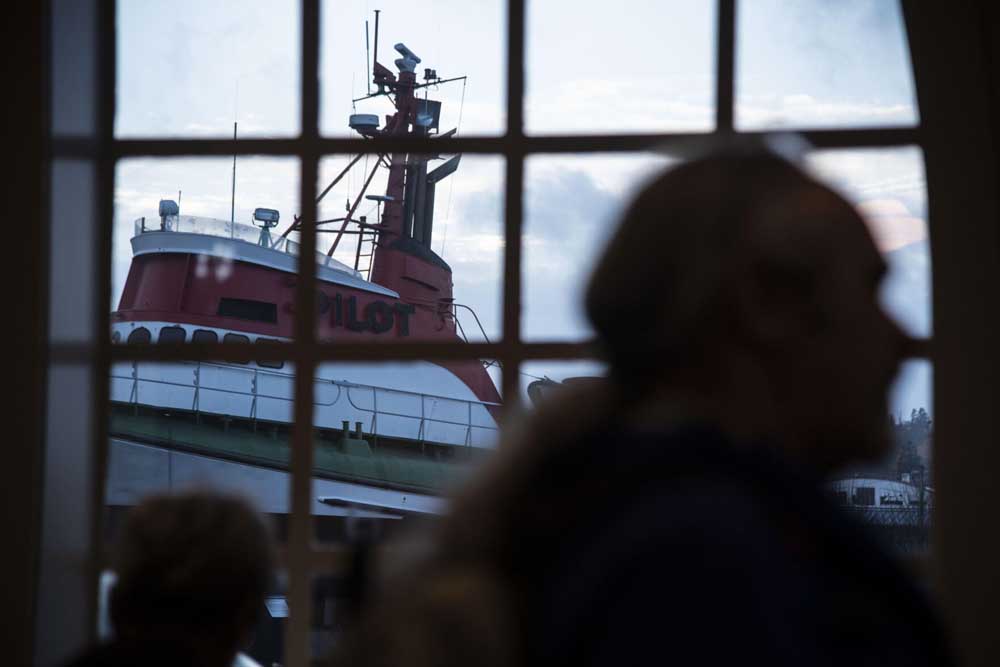Columbia River Maritime Museum outlines expansion
Published 9:00 am Tuesday, January 30, 2024

- The Columbia River Maritime Museum in Astoria plans to add a new Mariners Hall.
The Columbia River Maritime Museum has shared new details of a $30 million expansion project, which will see dozens of historic vessels and artifacts displayed in a second exhibit hall.
Mariners Hall, a two-story building proposed adjacent to the museum off Marine Drive, is expected to add more than 24,000 square feet of exhibit space, as well as an area for education programs.
Bruce Jones, the museum’s executive director, spoke about the project at an open house on Jan. 24 at the Barbey Maritime Center, where renderings outlined exhibit plans and building design.
“It’s about the human experience, the mariner, hence the name Mariners Hall. Just to show we’re really focused on the people that built these boats and other craft, that operated them, that maintained them, how it impacted our community,” Jones said.
The museum has raised $23.2 million toward the project, which is on track to begin site work in September and open in the summer of 2026.
Exhibit plans for Mariners Hall include showcasing several boats now in storage, such as the Merrimac, a 45-foot wooden yacht built by Astoria Marine Construction Co. in 1938, and The Duke, a salmon tender built in 1902 by Wilson Brothers in Astoria.
Museum leaders are also working with the Chinook Indian Nation on an exhibit that could feature an oceangoing canoe.
Some exhibit plans include interactive elements. “We’re going to have boats that you can get on, that you can walk aboard, like a log bronc that was used to corral logs on the river,” Jones said.
The largest of the hall’s exhibits will be the 52-foot motor lifeboat Triumph II, which served local fishermen at Point Adams and Cape Disappointment for 60 years.
“We’re going to let people get on the back of the Triumph, on the stern, and when they look behind the boat, they’re going to see a big wraparound monitor with a video of towing a disabled boat in heavy seas, so you’ll get a sense of motion,” said Jones, a former commander of U.S. Coast Guard Sector Columbia River.
Other exhibits will make use of the building’s vertical space, like a soon-to-be retired Coast Guard HH-65 Dolphin search and rescue helicopter, which the museum plans to suspend 15 feet above the ground floor.
A mezzanine deck will offer an eye-level view of the helicopter, as well as an aerial view of boats on the ground level.
“When you’re on the mezzanine, you’ll be able to look right into the cabin of the helicopter. You’ll see the pilot, and see the hoist operator and the rescue swimmer. They’ll all be sculpted figures,” Jones said.
The boathouse, an area on the southwest corner of the building, will also make use of vertical space to fit floating docks on two levels that will allow for multiple points of view.
Among other items, the museum plans to display a reassembled first-order Fresnel lens that once illuminated the Cape Mendocino Lighthouse in Humboldt County, California. In recent years, the lens was placed in storage by the Coast Guard.
“It’ll be restored in pieces in the warehouse and eventually will be put back together, reassembled one piece at a time,” Jones said.
Other plans for the new building include a classroom for museum education programs and a science, technology, engineering, arts and math space.
The museum is working with Rickenbach Construction, based in Astoria, as the project’s general contractor, along with Portland-based Opsis Architecture and Seattle-based exhibit designer Storyline Studio.
Building and landscape plans include a wood-framed structure for Mariners Hall, a new entry to the existing museum, a covered walkway and additional outdoor displays.
“We feel very lucky that we’ve been able to take advantage of this opportunity,” Jones said.
“Which is to put more of our collections on display and tell more stories about what happens in the maritime environment, especially on the Columbia River.”





